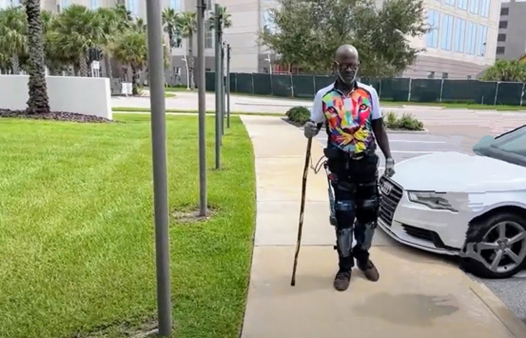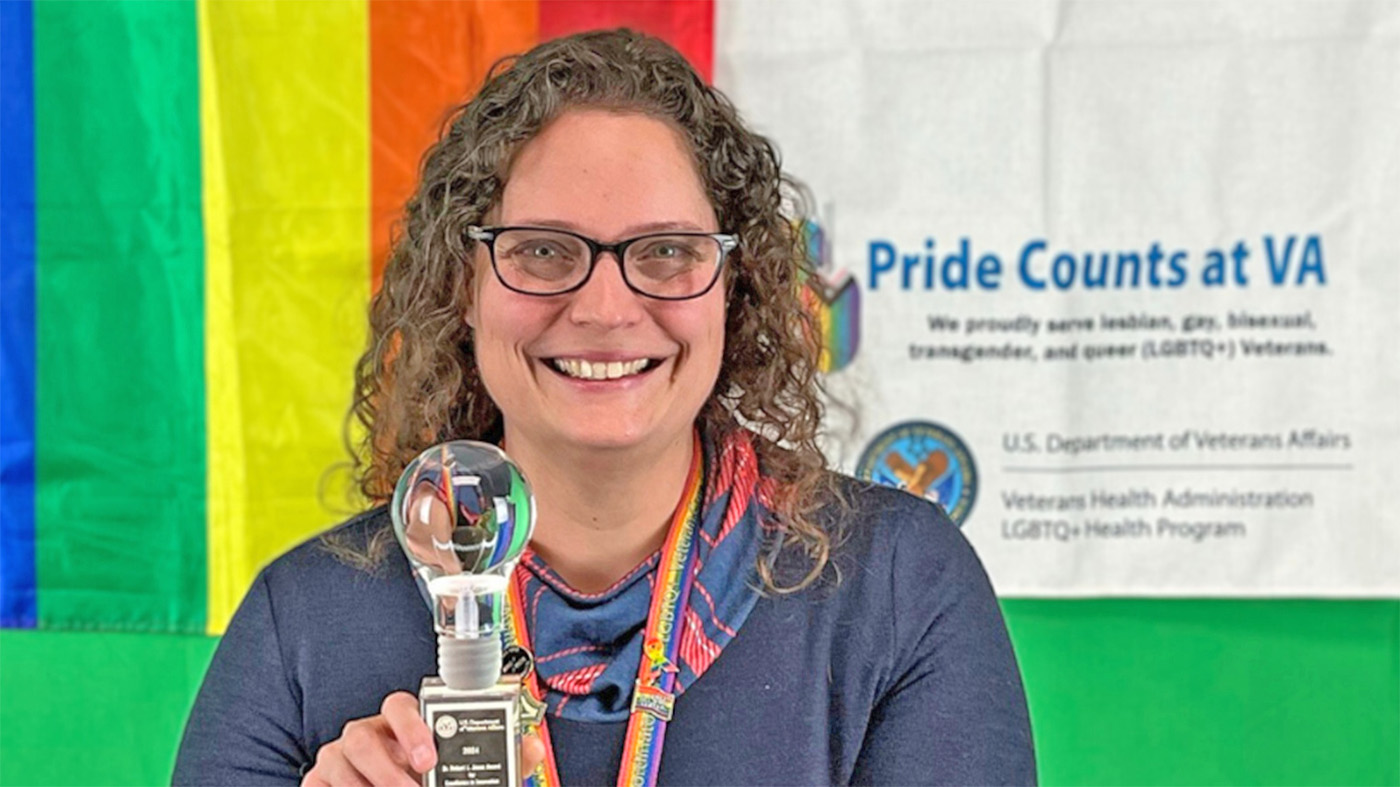From September 4-5, VHA’s National SimVET Center (NSC) in Orlando, Florida, was the center of the robotic future of health care during the Office of Healthcare Innovation and Learning’s (OHIL) first ever Autonomous Caregivers Robotic Demonstrations (ACRD). Leading health care robotics companies came from across the world to present how their groundbreaking robotic technologies can help VA staff and advance Veteran care.
Organized by SimLEARN’s SimVET Integrations portfolio and OHIL’s VA Ventures, the event featured engaging demonstrations and hands-on experiences. Throughout the two days, medical professionals, SimLEARN staff and Veterans themselves were given the chance to see firsthand how highly advanced robotics can impact VA’s health care by delivering a new level of dignity in the care Veterans receive. That dignity in care was seen across the demonstrations as participants showed how robots can support rehabilitation, sterilization, the simple task of hospital deliveries and much more.
“We saw the cutting edge of elevating health care service while restoring or maintaining a Veteran’s dignity,” SimLEARN Director Eric Bruns noted of the incredible collection of robots that came to the NSC.
Robotics provide dignified care
It was Dr. Susan Kirsh, deputy assistant under secretary for Health for Discovery, Education, Affiliated Networks, who opened ACRD by noting that the work robots will do for health care professionals and systems was not meant to take jobs away but to instead free up caregivers and Veterans from jobs that fall within the three “Ds”: dull, dirty, dangerous. To this, however, she added a fourth “D” word: dignity. These robotic tools, a few of which are already implemented in VA facilities, are not just here to support work but to improve the safety and dignity of Veterans.
Some of the demonstrations made it clear that robots directly impacted Veteran care in a positive manner. One example of this was a new robotic bed that allowed a single caregiver to move a Veteran comfortably and without direct contact from one bed to another for easy transfers within the hospital. An awkward procedure that usually requires multiple staff members and direct handling of a patient is now a more dignified process that reduces chances of harm to both Veterans and staff.
Also on display were a pair of exoskeleton legs that help Veterans with limited mobility walk using advanced robotics. This powerful, life-changing feat of robotics not only provides Veterans who have used it with advanced rehabilitation but also allows those who struggle with mobility to regain the dignity of being self-sufficient. Navy Veteran Joseph Bailey demonstrated how easily the exoskeleton gave him a freedom of mobility he would not have otherwise.
In the same vein, another robot delivered advanced rehabilitation to Veterans’ upper bodies, especially the notoriously tricky shoulder area. This advanced upper-body exoskeleton provided support and guidance in rehabilitative work for those whose arms, shoulders and back would otherwise be unable to complete the same exercises.
Supporting VA staff with advanced robotics
It isn’t just Veterans who are impacted by autonomous robotic support. Multiple demonstrations throughout the 2-day experience showed how robotics can free staff from those menial tasks that take time away from engaging directly with Veterans, allowing clinicians to focus on patients. These robots ranged from a simple cart that could easily and autonomously maneuver through a busy hospital carrying items from different areas to a secure robot that could not only transfer medication and other items, but also seamlessly use an elevator, allowing it to move through an entire facility without any help.
Other robots provided direct care to Veterans utilizing mobile bases, extending arms, and multiple cameras, allowing caregivers to remotely attend to them or engage with them from a long distance. One robot efficiently disinfected a room using powerful UV lights, ensuring that environmental maintenance services (EMS) had an easy to use, lightweight, efficient cleaning tool that disinfects in ways non-robotic UV systems cannot.
“We saw technologies ready to deploy to hospitals today that could be lifechanging for Veterans and game-changing for VA health care,” said Dr. Scott Wiltz, SimLEARN’s medical director. “From improving the safety and dignity of Veterans being moved through the facility to rehabilitation aids that could improve access and quality for VA services, we have the opportunity once again to make VA the leader in pioneering the future of health care.”
About SimLEARN
VHA SimLEARN is the Veterans Health Administration’s comprehensive program dedicated to enhancing health care through simulation-based training, product testing and technological evaluation. By utilizing cutting-edge technology in a controlled environment, SimLEARN offers health care professionals the opportunity to refine their diagnostic, procedural and communication skills. SimLEARN improves Veteran care by providing distinct services that include the development of educational curricula and the evaluation of health care technology, services and spaces. This innovative approach to learning and testing fosters a culture of continuous improvement, ultimately leading to better patient outcomes for the total health care experience for America’s Veterans.
About OHIL
The Office of Healthcare Innovation and Learning unites VHA Innovation Ecosystem (VHA IE), the Simulation Learning, Evaluation, Assessment, and Research Network (SimLEARN), and the Center for Care and Payment Innovation (CCPI). OHIL is paving the way for cutting-edge advancements, fostering growth through immersive learning experiences and driving transformative changes in health care.
Topics in this story
More Stories
Bob Jesse Award celebrates the achievements of a VA employee and a team or department that exemplifies innovative practices within VA.
The Medical Foster Home program offers Veterans an alternative to nursing homes.
Watch the Under Secretary for Health and a panel of experts discuss VA Health Connect tele-emergency care.









Is the VA health surgeons using robotic assisted surgeries. If so how does a veteran get to request and receive robotic assisted surgeries for joint surgery. My primary doctor doesn’t know whom to recommend. Any help would be appreciated.
Thank you for keeping us current on the newest innovation becoming available to challenged Veterans with physical limits. I am an ex-Navy Hospital Corpsman and Physical Therapist during my service. I retired in 2000 from The Department Of Veterans Affairs Medical Center in Northport, NY as a Psychiatric nurse after 27yrs. of service to our Veterans. I still counsel Veterans privately with Amvets and the American legion, I want you to know how much I enjoy these VA updates, and how much of this information I pass on to my fellow Veterans. Thank You for your continued service. Irving A. Cohen LPN